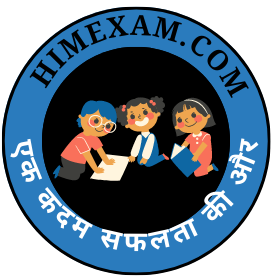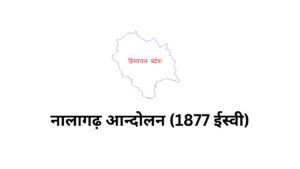Indian Economy Question Answer Set-2
||Indian Economy Question Answer Set-2||Indian Economy MCQ Set-2||
11. RBI does not transact the buiness of which of the following state governmets ?
(A) Nagaland
(B) Assam
(C) J & K
(D) Rajasthan
Explanation:-An important function of the Reserve Bank of India is to act as Government banker, agent and adviser. The Reserve Bank is agent of Central Government and of all State Governments in India excepting that of Jammu and Kashmir. State Government transactions are carried out by RBI in terms of the agreement entered into with the State Governments in terms of section 21 A of the Reserve Bank of India Act, 1934.
12. Which amidst the following banks was recently converted to a “Universal Bank” ?
(A) Corporation Bank
(B) Bank of Baroda
(C) IDBI Bank
(D) Canara Bank
Explanation:-The Industrial Development Bank of India (IDBI) was established in 1964 by the government of India under an act of the Indian Parliament called the IDBI Act. On December 15, 2003, the Indian Parliament approved the conversion of Industrial Development Bank of India’s (IDBI) into a universal bank. The government’s move was significant given the fact that the Development Financial Institution (DFI) had been struggling to sustain its growth in recent times. In India, the Development Financial Institutions were established and developed by Government of India and Reserve Bank of India (RBI) to meet the specific needs of the industry and were traditionally engaged in long term financing, as their main objective was to take care of the investment needs of industries and to contribute to a better industrial climate.
13. Which of the following PSUs has been privatised?
(A) HZL
(B) CMC
(C) Hotel Corporation of India
(D) NALCO
Explanation:-Hindustan Zinc Limited (HZL) is an integrated mining and resources producer of zinc, lead, silver and cadmium. It is a subsidiary of Vedanta Resources PLC. HZL is the world’s second largest zinc producer. Hindustan Zinc Limited was incorporated from the erstwhile Metal Corporation of India on 10 January 1966 as a Public Sector Undertaking. In 2001 as part of the BJP Government’s anti-corruption drive, the company was put up for sale. In April 2002, Sterlite Opportunities and Ventures Limited (SOVL) made an open offer for acquisition of shares of the company; consequent to the disinvestment of Government of India’s (GOI) stake of 26% including management control to SOVL and acquired additional 20% of shares from public, pursuant to the SEBI Regulations 1997. In August 2003, SOVL acquired additional shares to the extent of 18.92% of the paid up capital from GOI in exercise of “call option” clause in the share holder’s agreement between GOI and SOVL.
14. Which amidst the following banks was converted to a ‘Universal Bank’ ?
(A) Punjab National Bank
(B) ICICI Bank
(C) UTI Bank
(D) Indus-Ind Bank
Explanation:-A universal bank participates in many kinds of banking activities and is both a commercial bank and an investment bank. Universal banks may offer credit, loans, deposits, asset management, investment advisory, payment processing, securities transactions, underwriting and financial analysis. Fiscal 2002 marked a turning point in the history of the ICICI group, as it witnessed the culmination of the ICICI group’s strategy of becoming an integrated financial services provider – the merger of ICICI Limited (ICICI) with ICICI Bank. The merger was a path-breaking initiative, which created India’s first “universal bank” and the second-largest bank in the country. As part of the reorganization, two of ICICI’s wholly-owned retail finance subsidiaries viz. ICICI Personal Financial Services Limited (ICICI PFS) and ICICI Capital Services Limited (ICICI Capital), were also merged with ICICI Bank, in order to integrate and consolidate the retail business
15. Who has provided the Savings Bank facility to the largest number of account-holders in India?
(A) State Bank of India
(B) Punjab National Bank
(C) Allahabad Bank
(D) Post Office
Explanation:-The Department of Posts, trading as India Post, is a government-operated postal system in India. Owing to its far-flung reach and its presence in remote areas, the Indian postal service is involved in other services such as small savings banking and financial services. The post office has offered and continues to offer various savings schemes, including National Savings Certificates, the Public Provident Fund, Savings Bank Accounts, Monthly Income Schemes, Senior Citizen Saving Schemes, and Time Deposit Accounts. Small savings accounts in rural post offices were a keystone to the department’s policy and the department had the largest number of savings accounts across the country.
16. The symbol of Reserve Bank of India is
(A) Capitol of Asokan Pillar
(B) Kuber with a purse of money
(C) Tiger before a Palm tree
(D) A dog sitting in a defensive state
Explanation:-The logo of the Reserve Bank of India comprises a tiger walking underneath a palm tree. It is contended that the Reserve Bank of India copied the tiger and palm tree symbol from the gold Mohur issued by the East India Company in the 19th century. The double Mohur of William IV had a nice reverse, which was a symbol of Lion and a Palm tree. When RBI was created, it was decided that the reverse of Double Mohur, the Lion and Palm design should be used as the emblem of RBI. The last minute modification was made introducing Tiger instead of Lion.
17. For whom was the first departmental life insurance started ?
(A) Army
(B) Civil officers of Central Government
(C) Employees of postal department
(D) Life Insurance Corpor-ation
Explanation:-Postal Life Insurance was started on 01.02.1884 as a welfare measure for the employees of Posts & Telegraphs Department under Government of India dispatch No. 299 dated 18 October, 1882 to the Secretary of State. Due to popularity of its schemes, various departments of Central and State Governments were extended its benefits. Now Postal Life Insurance is open for employees of all central and state government departments, nationalised banks, public sector undertakings, financial institutions, local municipalities and District councils and educational institutions aided by the Government.
18. What is the animal on the insignia of the RBI ?
(A) Lion
(B) Tiger
(C) Panther
(D) Elephant
Explanation:-The logo of the Reserve Bank of India comprises a tiger walking underneath a palm tree. When RBI was created, it was decided that the reverse of Double Mohur, the Lion and Palm design should be used as the emblem of RBI. The last minute modification was made introducing Tiger instead of Lion
19. The main source of revenue for a State Government in India is
(A) Sales tax
(B) Excise duty
(C) Income tax
(D) Property tax
Explanation:-The principal source of States own tax revenues is sales tax which accounts for about 60 per cent of the total. The other major components of States own tax revenues according to their revenue share are State excise, registration and stamp duty, motor vehicle and passenger tax, electricity duty, land revenues, profession tax, entertainment taxes and other sundry taxes. In the wake of economic reforms, several States competitively announced various tax concessions, especially sales tax concessions, to attract private investments. These tax wars resulted in considerable reduction in the buoyancy of growth of tax revenues of the States without commensurate gains in terms of private investment
20. To achieve high rates of growth of national output, the economy has to
(A) reduce the rate of growth of population
(B) borrow foreign capital
(C) step up the rate of savings
(D) increase the rate of investment and reduce the capital output ratio
Explanation:-The immediate effect of devoting a larger share of national output to investment is that the economy devotes a smaller share to consumption; that is, “living standards” as measured by consumption fall. The higher investment rate means that the capital stock increases more quickly, so the growth rates of output and output per worker rise. According to Smith, in a developing economy, both income level and capital stock rise. In addition to this, the rate of capital accumulation also shows a tendency to increase. This leads to increase in the capital stock in successive periods as investment keeps on increasing. Another important factor which contributes to the progress of an economy is the successive decline in the incremental capital-output ratio due to the influence of capital on the productivity of labour.
||Indian Economy Question Answer Set-2||Indian Economy MCQ Set-2||
Join Our Telegram Group :- Himexam





